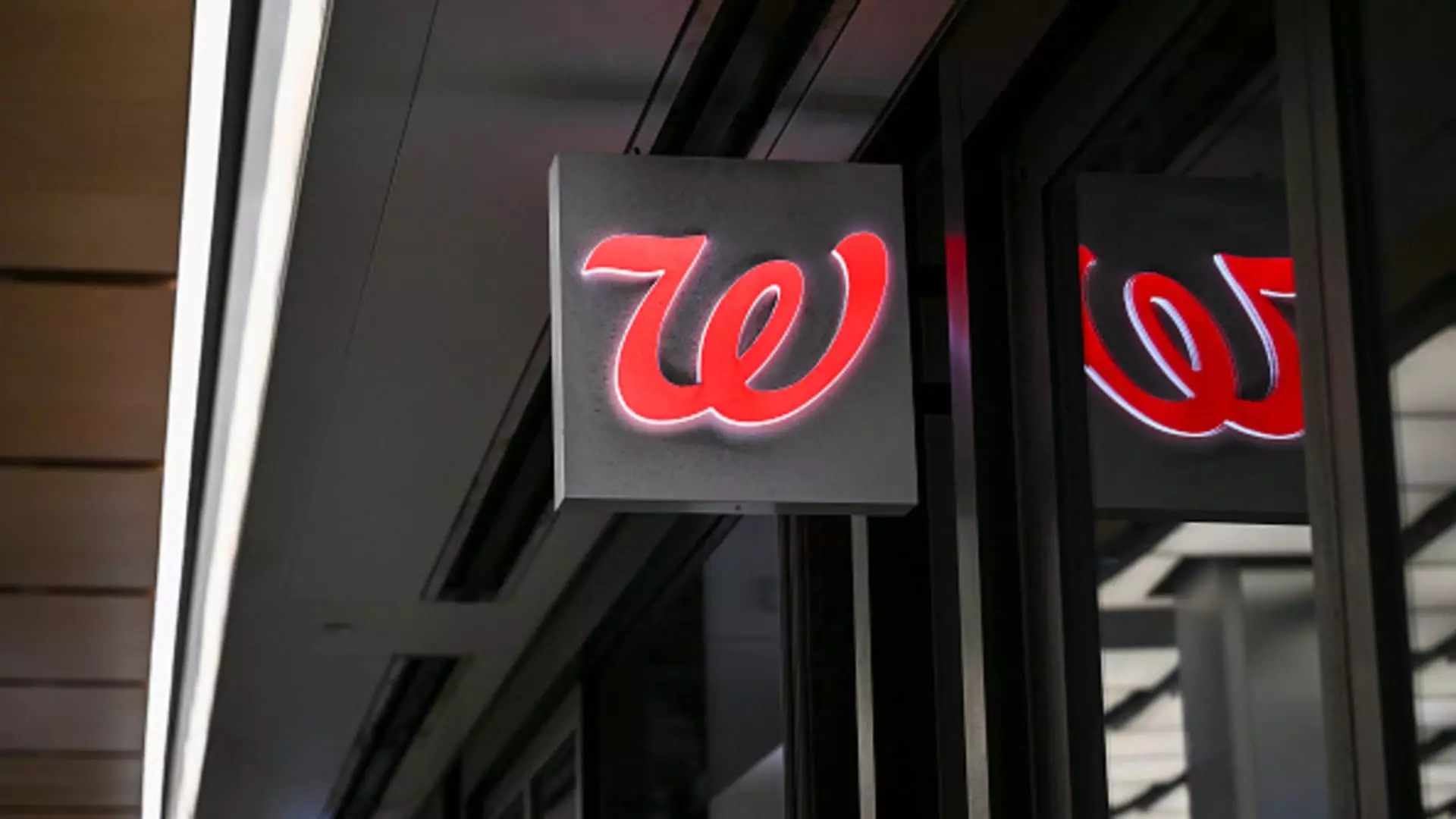The recent financial results from Walgreens present a dual narrative: on one hand, the company appears to be rolling out expected earnings and revenue that surpassed Wall Street predictions. On the other hand, it signals the culmination of a lengthy and tumultuous era as it prepares to transition into a private entity under Sycamore Partners. This moment is not merely a corporate transaction; it reflects the existential struggles faced by traditional retail spaces and the pressures of modern health care. As a central player in both pharmacy and retail, Walgreens serves as a symbol of what happens when a legacy institution grapples not only with external competition but also with the heavy burden of its own operational missteps.
For over ninety years, Walgreens operated as a stalwart public entity. Its withdrawal from the public sphere showcases that even longstanding giants are not immune to the winds of change. While its reported earnings per share of 63 cents exceeded the expected 53 cents, one must question: at what cost? The net loss of $2.85 billion signals an underlying turmoil that belies the façade of profitability. For me, this underscores a critical point: success in financial measures is often superficial when nested within layers of mismanagement and strategic blunders.
Strategic Misalignments in an Evolving Landscape
Walgreens’ aggressive pivot towards health care raises eyebrows. Instead of doubling down on its core competencies as a retail pharmacy, the company initiated a costly foray into primary care clinic partnerships such as VillageMD. While diversification into health services may seem advantageous, this strategy is riddled with implications. In finance, risk is omnipresent; the question remains if Walgreens adequately accounted for it. One cannot ignore that the sector is saturated with competition, particularly from nimble players such as CVS, grocery chains, and even Amazon, which have established footholds in what should have been Walgreens’ domain. In this light, the company’s decision to prioritize ambitious health care investments over streamlined operations appears less like visionary leadership and more like a misguided attempt at relevance.
CEO Tim Wentworth’s comments about “disciplined cost management” may ring hollow when viewed in light of their extensive store closures and mounting difficulties in their retail pharmacy operations. The significant legal settlements related to opioid-related claims are not just financial penalties; they are emblematic of a wider malaise within the pharmaceutical industry that exposes Walgreens as a participant in an ongoing tragedy. The high-profile litigation illustrates that carelessness in regulatory compliance and ethical commitment can extract a hefty toll—one that ultimately shakes investor confidence and brand loyalty.
Turning Point or Distant Mirage?
The future remains murky as Walgreens leverages its $10 billion purchase by Sycamore Partners. While transitioning into private ownership could allow for sharper strategic focus and operational overhaul, the historical performance warns of a potential fade into obscurity if the company does not reengage with its fundamental principles. The withdrawal of fiscal guidance for 2025 exacerbates concerns surrounding transparency and accountability to stakeholders, who are left in the dark about what lies ahead.
The positive market response—an uptick in shares following the earnings report—offers a temporary veil over deeper systemic issues. Shareholder optimism must contend with the realities that brought Walgreens to this precarious juncture. Financial tomfoolery through capitalizing on investment windfalls, like liquidating shares of Cencora and BrightSpring, might offer cream atop a cake devoid of substance. It remains a tough pill to swallow for those who have faithfully relied on Walgreens as their go-to pharmacy for generations.
As the healthcare landscape evolves, Walgreens finds itself at a crossroads of opportunity and risk. Without deliberate attention to ethical commitments, operational integrity, and authentic customer engagement, they could not only lose their competitive edge but also their identity. The company is no longer just navigating a market challenge; it is battling against time and its own legacy.


Leave a Reply